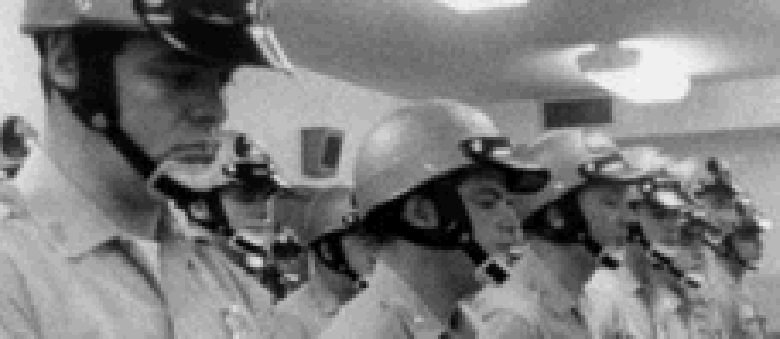Reviews
Frederick Wiseman
USA, 1969
Credits
Review by David Carter
Posted on 05 June 2008
Source Zipporah Films DVD
Categories Frederick Wiseman
A man sits at an officer’s desk to lodge a complaint against a child molester. Before the officer has a chance to respond the man informs him, “If you don’t want to take care of it, I will.” He then proceeds to launch into a very graphic and violent description of exactly how he would “take care of it,” including the precautions he’d take to ensure that he wouldn’t be caught.
A helmeted officer stands between an elderly woman and a young couple with a baby. The two parties are in a heated argument: she’s locked them out of their apartment, but they have already paid this week’s rent. The problem stems from a knife fight between the two that spilled out into the street that morning. The officer informs the landlord that since they are husband and wife, “it’s between them and we can’t do anything about it.”
These are just two of the brief segments that open Wisemans Law & Order, a look at the Kansas City, Missouri police department in 1969. In these early scenes Wiseman establishes what is to be a common thread throughout the film: a public antagonistic towards the police, and a police force conscious of the futility of most of their actions. It is for this reason that the most frequent emotion displayed by the officers in the film is frustration. It is evident in their interactions with the public whether they are arresting or assisting them, but is most clear when they speak to each other. Wiseman returns to a scene of two officers talking from their car windows at several points in the film. The officers change from scene to scene, but their dissatisfaction does not. They complain about the leniency of the court system, their lack of necessary equipment, and their low pay. Later in the film, an argument between an officer and his superior breaks out during morning roll call; that this tension is not new is abundantly clear.
1969 was a time of unprecedented social turmoil in the United States. Mid-size to large cities - like Kansas City - were dealing with racial tension and urban decay, with the police shouldering a good deal of the blame for both. Wiseman’s central theme appears to be to depict the police department as a group of average people doing a thankless job and not the oppressors that many believed them to be. His motive is not to unjustly lionize the police but to confront and challenge people to reconsider a growing viewpoint. Their frustration mirrors that of those they serve. Wiseman takes great care to show the officers expressing emotions, fear, happiness, concern, in an effort to humanize them. He does this but at the same time ensures that they remain anonymous; no name or personal information is ever offered. Wiseman jumps from scene to scene in such rapid fashion that the men resemble a procession of empty uniforms. This is perhaps Wiseman’s way of rationalizing the common perception of the police as an institution rather than a group of individuals.
Context brings up the question of race also. As some of the officers imply, Kansas City had large-scale rioting after the Martin Luther King assassination the year before. The almost exclusively white police force patrols a predominantly black area. The tension when white and black meet is palpable, Wiseman’s camera catching the shared fear between them. However, again Wiseman seems to be attempting to dispel common conceptions about the police rather than foster them. The white officers are shown helping the black community more often than not. Wiseman, often praised for his equanimity, is quite obviously leading the audience through the way he frames these interactions. The surprisingly touching scene of a white officer comforting a crying little girl who is lost follows a tense scene where a shotgun-wielding officer arrests two black youths carrying pistols. Wiseman’s long shot of the officer looking very fatherly (complete with a pipe) with his arm around the little girl is a decidedly subversive image. A year prior to Law & Order, hundreds of stations refused to broadcast television’s first interracial kiss on Star Trek. A white man treating a black child like his own would have been received by most as nothing short of scandalous.
Made between Titicut Follies and Hospital, Law & Order is often left out of discussions of Wiseman’s most powerful works. It definitely belongs on that list, yet the transparency of our modern law enforcement through Cops and Court TV has somewhat dulled its edge. Law & Order, like many of Wiseman’s works, has an immediacy about it. It was made for specific moment in time, and knowledge of that time is critical to fully appreciate it. Even removed its context, Law & Order is a masterful example of Wiseman’s documentary technique.
More Frederick Wiseman
-
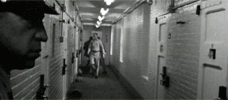
Titicut Follies
1967 -
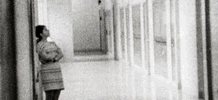
High School
1968 -

Law & Order
1969 -

Basic Training
1971 -

Juvenile Court
1972 -
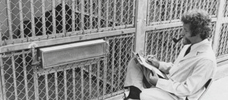
Primate
1974 -
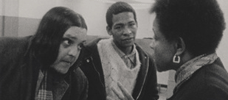
Welfare
1975 -
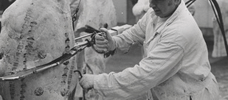
Meat
1976 -
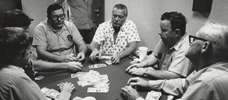
Sinai Field Mission
1978 -
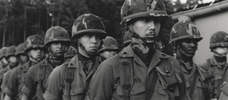
Manoeuvre
1979 -

Model
1980 -

The Store
1983 -

Blind
USA -

Adjustment & Work
1986 -

Missile
1987 -

Central Park
1989 -

Near Death
1989 -

Aspen
1991 -

Zoo
1993 -

High School II
1994 -

Ballet
1995 -
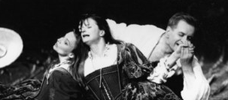
La Comédie-Française
1996 -
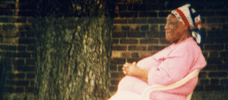
Public Housing
1997 -

Belfast, Maine
1999 -

Domestic Violence / Domestic Violence 2
2001 / 2002 -
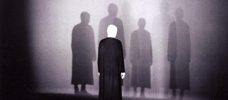
The Last Letter
2002 -

State Legislature
2006
We don’t do comments anymore, but you may contact us here or find us on Twitter or Facebook.



